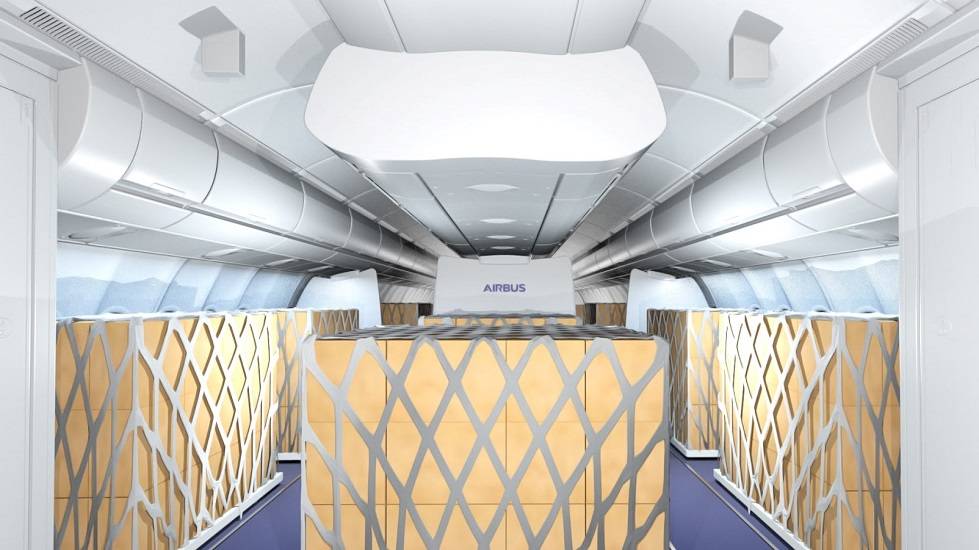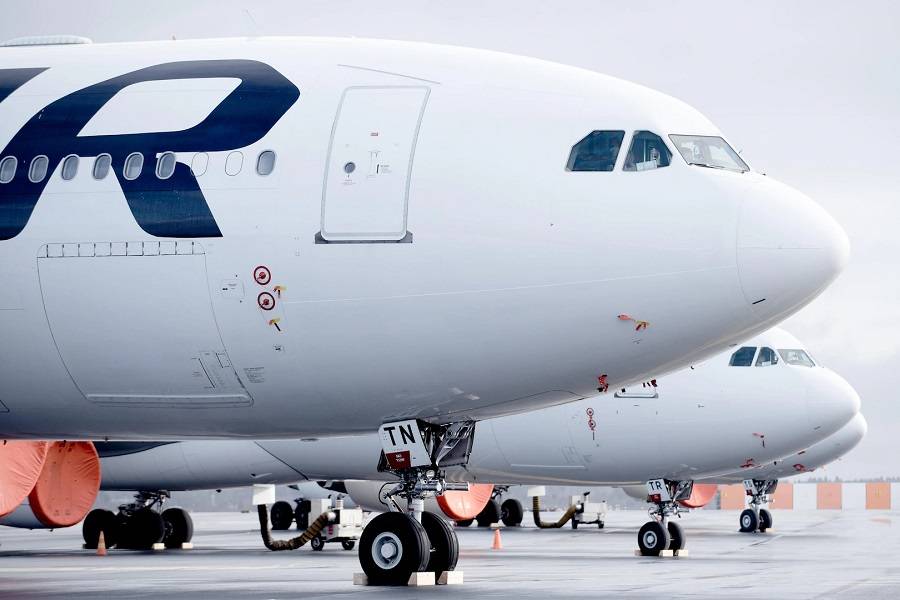Airbus and Lufthansa Technik are working on an STC, for temporary modifications, allowing airlines to carry ‘cargo in cabin’. A lot of it!
It is one of the products of these troubling times. It seemed to make sense in the airline days, when countries were scrambling for PPE. Many (most?) of us thought that the end of the pandemic would also end this practice. However, now Lufthansa Technik and Airbus are working to make cargo-in-cabin into a post-pandemic… feature!
The reason airlines didn’t use their passenger jets to carry cargo previously, is that it just isn’t economically viable. This has a lot to do with the price of fuel Vs the price of freight. And that, in turn, has to do with how much weight passenger planes can carry. Lufthansa Technik may be about to change this last detail, making cargo a viable prospect for these aircraft.

The aircraft in question is the Airbus A330. A passenger A330-300 has a maximum payload of 45,600kg (100,500lbs). A purpose-built A330-200F freighter can carry 68,600kg (151,200lbs). Yes, this is a bit of an apples-to-oranges comparison, because of the different aircraft lengths. We’re using the -300 passenger jet because this is what Finnair, the launch customer is using. But for reference, the passenger A330-200 can carry 49,400kg (108,900lbs).
How The Lufthansa Technik Cargo Conversion Works
Lufthansa Technik’s cargo-in-cabin STC (supplemental type certificate) will allow two things. Firstly, it provides a better method to secure cargo in a cabin designed for passengers. But more importantly, it allows an increase in payload of up to 15 tonnes (33,069lbs)! Whichever plane you pick to compare your numbers, the conversion allows passenger A330s to get reasonably close to the freighters!
The way the modification works is straightforward. Special brackets allow the use of standard TSO (Technical Standard Order) pallets. These brackets attach to the existing seat tracks. These are rails/tracks along the cabin floor, where the seats normally go. The modification only applies to the middle position shown. But this is enough for the weight increase. Lufthansa Technik’s cargo modification kit will include additional equipment, like firefighting gear, complying with cabin safety requirements.

It’s also worth noting that during the pandemic, a lot of Cargo-in-cabin depends/depended on exemptions. These made sense when there was a big need for PPE. However most of these exemptions don’t apply any more. Airlines can still carry cargo on passenger jets, but with more restrictions – and smaller loads. Lufthansa Technik’s cargo-in-cabin program can fix this issue.
Do Airlines Really Need It?
This is all well and good, you may think, but will there really be any demand for all this, after the pandemic? It very likely could. Firstly, airlines could still have a number of long-haul jets that still don’t see enough passenger demand in some routes, for another year or more. That, in itself, is incentive-enough to attract airlines to Lufthansa Technik’s cargo solution.

And even after traffic rebounds, a lot of passenger routes are seasonal. Airlines take advantage of this to put their jets through time-consuming maintenance. But a cargo role, with a kit like that of Lufthansa Technik, adds another string to the airlines’ bows.
Obviously it’s not that simple. A few brackets and attach points don’t give the functionality of a freighter, no matter the weight. There’s still no cargo door. So pallet sizes have to fit through passenger doors, with all the implications this has for loading/unloading time. But just as obviously, Lufthansa Technik and Airbus are not claiming to be replacing cargo aircraft!

Airbus hasn’t focused much on cargo previously. The company is lately making noises about an A350F model, which is attracting some attention. Until then, their A330-200P2F cargo conversion and this Lufthansa Technik modification, will have to do. It will be interesting to see if any imitators materialize.
From Finnair’s side, Juha Ojala, Vice President of Finnair Technical Operations, said:
“With this EASA Approved STC solution we are able to continue our successful cargo operations even during ramp-up. The solution is technically simple and does not require massive investments like traditional cargo conversions.“



